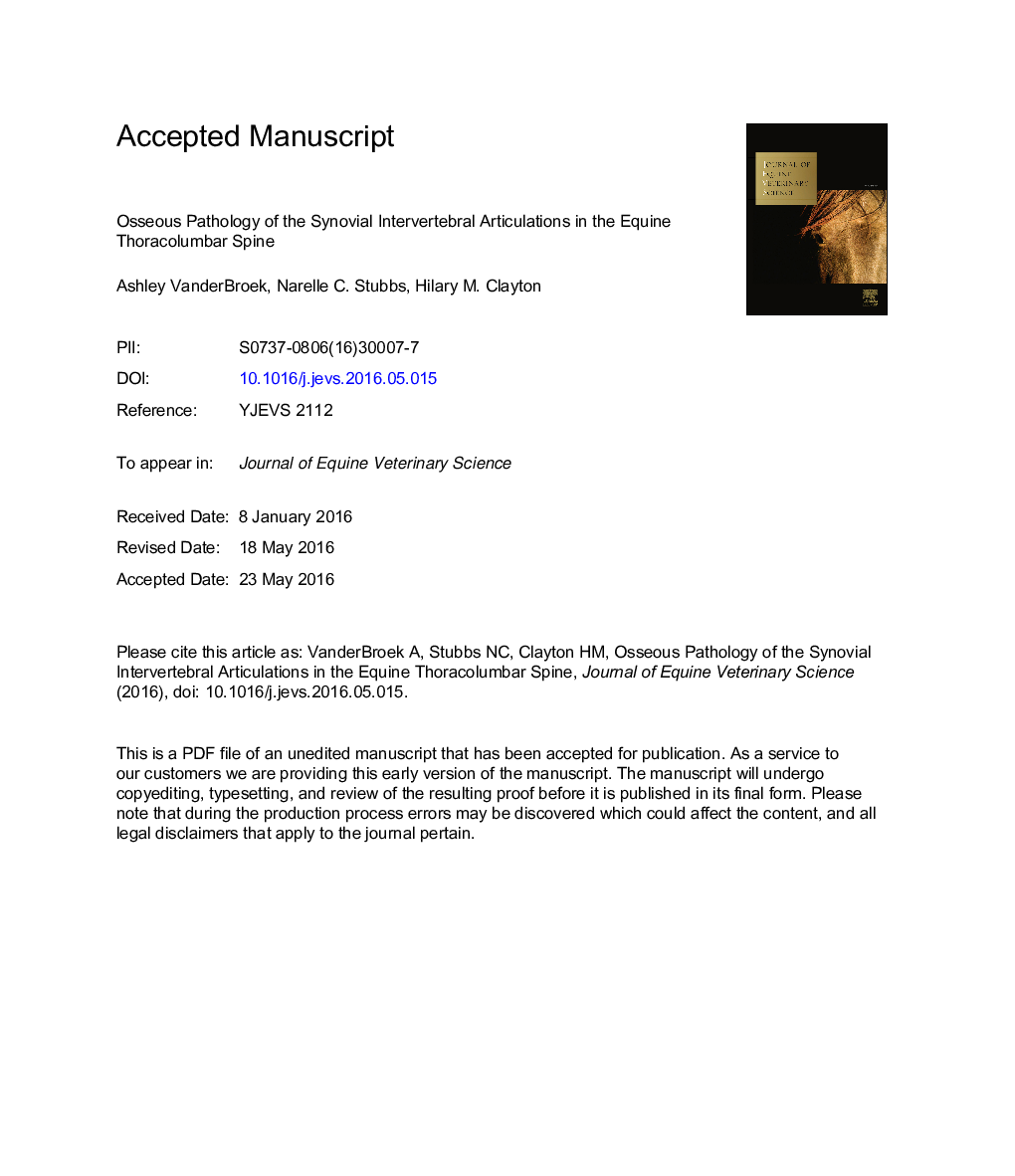| Article ID | Journal | Published Year | Pages | File Type |
|---|---|---|---|---|
| 8483514 | Journal of Equine Veterinary Science | 2016 | 23 Pages |
Abstract
The objectives were to investigate the location and severity of osseous lesions of the synovial intervertebral articulations (SIAs) in the equine spine from the cervicothoracic junction to the lumbosacral junction. It was hypothesized that lesion number and severity would increase with horse age and height and that severe lesions would be more prevalent caudal to T16. The vertebrae from C7 to S1 were removed from 56 horses by dissection, disarticulation, and boiling out. Each SIA was evaluated for the presence and severity of osseous lesions which were scored using two methods: numerical grading of lesion severity on a scale of 0-3 and using a visual analog scale (VAS). Descriptive statistics were calculated, and the VAS data were analyzed using a split-plot analysis of variance (ANOVA) to determine the effects of horse age, height, and vertebral level. Periarticular osseous lesions were observed at every intervertebral level from C7-T1 to L6-S1 with 91% of horses having at least one lesion of grade 2 or higher. Split-plot ANOVA indicated significant effects of age (P = .014), with older horses having more severe lesions, and vertebral level (P < .0001), with more severe lesions occurring in the cranial thoracic (C7-T1 to T2-T3) and caudal thoracic to lumbosacral (T15-T16 to L6-S1) regions. There was no effect of the horse's height on SIA osseous lesions. Regional differences in severity of osseous lesions of the SIA in the thoracolumbosacral spine are likely related to changes in shape and orientation of the articular surfaces which affect the forces and motion patterns during locomotion.
Related Topics
Life Sciences
Agricultural and Biological Sciences
Animal Science and Zoology
Authors
Ashley VanderBroek, Narelle C. Stubbs, Hilary M. Clayton,
